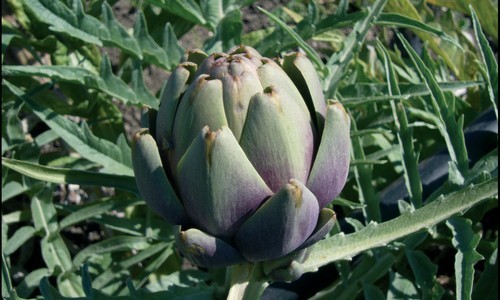Prodotti Tradizionali della Campania
Carciofo di Pietrelcina

Nella cittadina di Pietrelcina, in provincia di Benevento, la coltivazione del carciofo fu introdotta intorno al 1840, ad opera, sembra, di un prefetto originario di Bari. Da allora il carciofo è stato sempre coltivato in appezzamenti non molto ampi, con un procedimento strettamente legato al lavoro umano in tutte le sue fasi, oltre che per la raccolta, anche per il taglio estivo degli steli e per la “scarducciatura”, cioè l’eliminazione dei germogli superflui, che viene operata prevalentemente in autunno inoltrato e ripetuta in primavera, quando i giovani cardi, appena estirpati vengono deposti sulle infiorescenze immature per preservarle dai raggi del sole che ne altererebbero il colore e ne comprometterebbero l’eccezionale morbidezza. Infatti, il carciofo di Pietrelcina è apprezzatissimo per la sua tenerezza e per il suo sapore molto delicato, che i pietrelcinesi celebrano in una sagra che si tiene nel maggio di ogni anno. Anche l’operazione di legatura, detta “ammazzamento” segue un antico procedimento tradizionale: si raccolgono in mazzetti ognuno dei quali è composto da quattro mammarelle, cioè capolini centrali, detti anche “cimarole”, legate con dei giunchi, detti “vinchi” in dialetto, che ancora oggi si raccolgono, come una volta, lungo le sponde del vicino fiume Tammaro.
![]() In
the small town of Pietrelcina, in the province of Benevento, the cultivation
of artichokes was introduced around 1840, by a Prefect from Bari. Since
then artichokes have been cultivated in plots of land that were not very
big, with a method that was strictly linked to human labour in all its
phases, not only during the harvest but also to cut the stems in the
summer and for the “scarducciatura”, that is the elimination
of the superfluous shoots, performed mainly in the middle of autumn and
repeated in the spring, at that time as soon as the young thistles were
uprooted they were then laid on the immature inflorescences to preserve
them from the sunlight that would alter their colour and compromise their
exceptional tenderness. In fact, Pietrelcina artichoke is so appreciated
for its tenderness and the delicate taste that the people of Pietrelcina
celebrate it with a festival that is held every year in May. The binding,
also called “ammazzamento”, is performed following an ancient
traditional procedure: the artichokes are gathered in small bunches each
made of four mammarelle, the middle little heads also known as “cimarole”,
that are tied with rush, known in dialect as “vinchi”, that
to this day are still picked, as they were before, along the bank of
the Tammaro river.
In
the small town of Pietrelcina, in the province of Benevento, the cultivation
of artichokes was introduced around 1840, by a Prefect from Bari. Since
then artichokes have been cultivated in plots of land that were not very
big, with a method that was strictly linked to human labour in all its
phases, not only during the harvest but also to cut the stems in the
summer and for the “scarducciatura”, that is the elimination
of the superfluous shoots, performed mainly in the middle of autumn and
repeated in the spring, at that time as soon as the young thistles were
uprooted they were then laid on the immature inflorescences to preserve
them from the sunlight that would alter their colour and compromise their
exceptional tenderness. In fact, Pietrelcina artichoke is so appreciated
for its tenderness and the delicate taste that the people of Pietrelcina
celebrate it with a festival that is held every year in May. The binding,
also called “ammazzamento”, is performed following an ancient
traditional procedure: the artichokes are gathered in small bunches each
made of four mammarelle, the middle little heads also known as “cimarole”,
that are tied with rush, known in dialect as “vinchi”, that
to this day are still picked, as they were before, along the bank of
the Tammaro river.